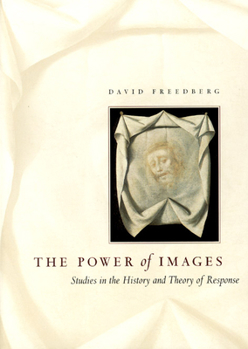The Power of Images: Studies in the History and Theory of Response
Select Format
Select Condition 
Book Overview
"This learned and heavy volume should be placed on the shelves of every art historical library."-E. H. Gombrich, New York Review of Books "This is an engaged and passionate work by a writer with powerful convictions about art, images, aesthetics, the art establishment, and especially the discipline of art history. It is animated by an extraordinary erudition."-Arthur C. Danto, The Art Bulletin "Freedberg's ethnographic and historical range is simply stunning. . . . The Power of Images is an extraordinary critical achievement, exhilarating in its polemic against aesthetic orthodoxy, endlessly fascinating in its details. . . . This is a powerful, disturbing book."-T. J. Jackson Lears, Wilson Quarterly "Freedberg helps us to see that one cannot do justice to the images of art unless one recognizes in them the entire range of human responses, from the lowly impulses prevailing in popular imagery to their refinement in the great visions of the ages."-Rudolf Arnheim, Times Literary Supplement
Format:Paperback
Language:English
ISBN:0226261468
ISBN13:9780226261461
Release Date:May 1991
Publisher:University of Chicago Press
Length:560 Pages
Weight:2.15 lbs.
Dimensions:1.2" x 6.6" x 9.4"
Customer Reviews
1 rating
A Fundamental Introduction to the Study of Images
Published by Thriftbooks.com User , 21 years ago
This book was ground-breaking for its time because of Freedberg's insistence on a new? approach to the study of images that focused on writing biographies of particular images which highlighted the historical and locally constructed responses, and what those responses could tell us about the psychology of the human response to images generally, rather than the more "traditional" art-historical aesthetic analysis approach. "Power of Images" is organized thematically with topics such as versimiltude, iconoclasm, and desire played out in front of the eyes of particular representative images. One of best aspects of this book is how clearly Freedberg takes seriously the notion of "presence" in images.The biggest limitation of this book is that it is almost completely bereft of information on non-pre-Enlightenment-European-Christian images. Rather than recusing himself from treating say Thai amulets, Freedberg overextends his conclusions in an unfortunately totalizing metanarrative. To be specific, I disagree with his brief rejoinder aimed at Stanley Tambiah's "Buddhist Saints of the Forest and the Cult of Amulets," and generally, I think many of Freedberg's conclusions would map poorly onto Tibetan or Japanese sacred statuary. In conclusion, I would still highly recommend this as a first-book for someone who wants to either learn about how to begin thinking about (religious) imagery and our responses to it, or someone who is looking for a wealth of short biographies and references to information on some of the most famous European Christian images.






